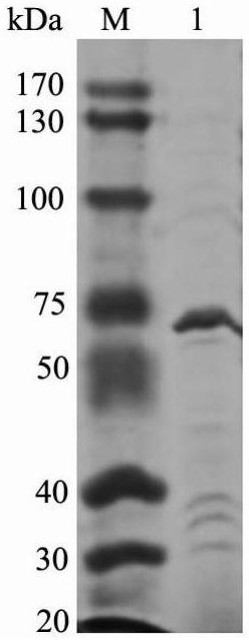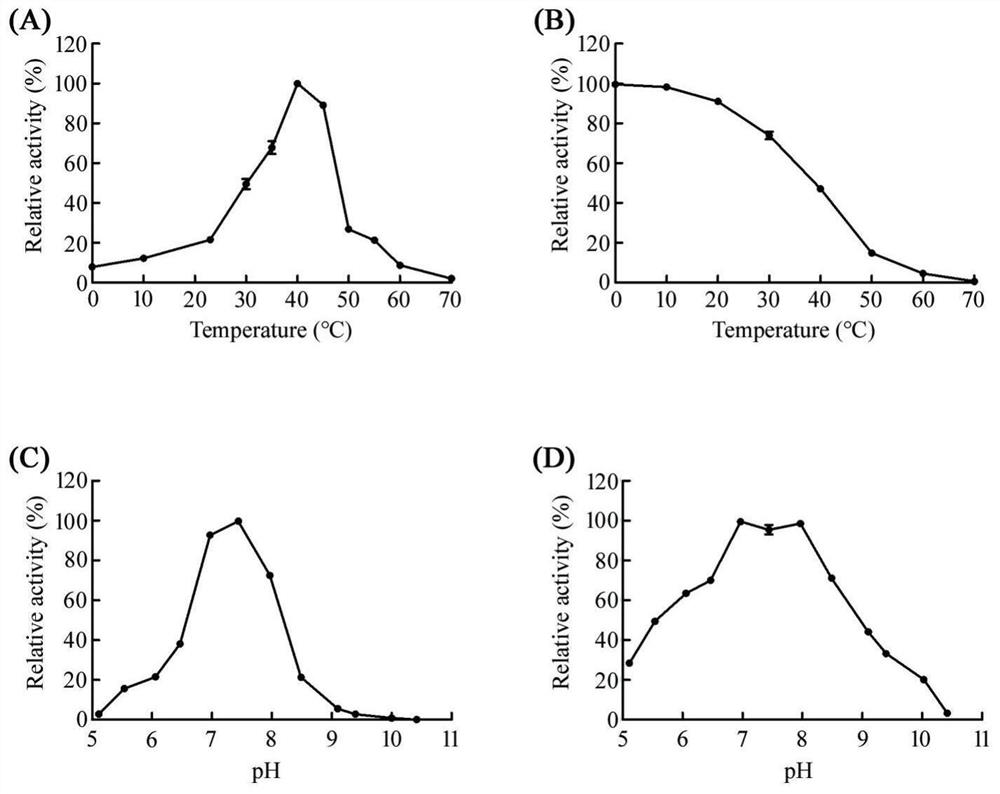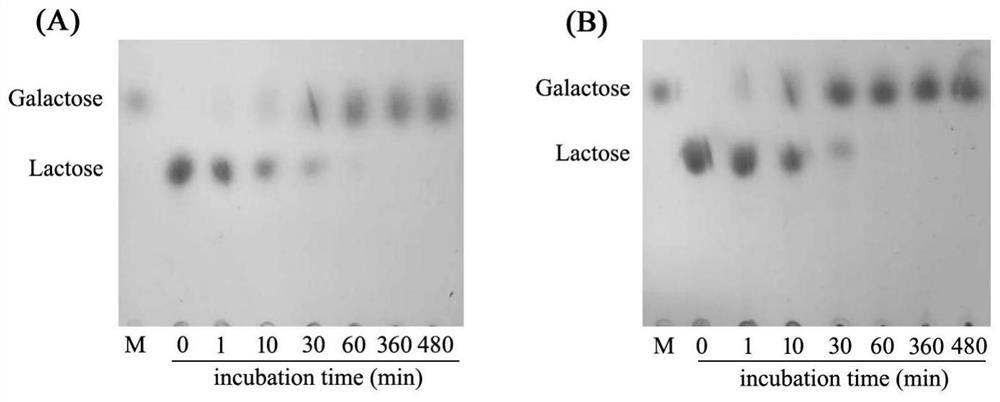Novel beta-galactosidase and application thereof in degrading lactose in milk
A technology of galactosidase and galactose, which is applied to a new type of beta-galactosidase and its application field in degrading lactose in milk, can solve problems such as being difficult to achieve, achieve large output, good prospects for industrial application, purification simple method effect
- Summary
- Abstract
- Description
- Claims
- Application Information
AI Technical Summary
Problems solved by technology
Method used
Image
Examples
Embodiment 1
[0023] Example 1 Sequence analysis and recombinant expression of β-galactosidase Gal42
[0024] The enzyme-producing gene gal42 of the β-galactosidase Gal42 in the present invention is derived from the marine bacterium Bacillussp.BY02, contains 2010 base sequences, and encodes 669 amino acid sequences. The marine bacterium Bacillus sp.BY02 is derived from sea mud samples, collected from the coast of the Yellow Sea, separated and purified using the lactose screening model, and using blue-white spots. Using the conserved domain analysis of the National Center for Biotechnology Information (NCBI) to analyze the Conserved domain (CDD) and the multiple sequence alignment Basic Local Alignment Search Tool (Blast), it was found that the sequence contained a β-galactose of the polysaccharide hydrolase GH family Conserved region of glycosidase. Among the reported β-galactosidases, the one with the highest amino acid sequence similarity to Gal42 is the β-galactosidase (GenbankWP_053430...
Embodiment 2
[0033] Preparation and purification method of embodiment 2β-galactosidase Gal42
[0034] Culture the recombinant strain BL21(DE3) / pET28a-Gal42 in 100 mL of LB liquid medium (50 μg / mL kanamycin) in a shaker at 37°C at 150 rpm to OD 600 =0.6, add the inducer isopropyl-β-D-thiogalactoside (IPTG) at a final concentration of 0.1 mM, and induce at 20° C. for 24 hours. The method for measuring β-galactosidase activity is: add 450 μL 10 mM ONPG (200 mM phosphate buffer, pH=8.0) to 50 μL enzyme solution, react at 40 ° C for 10 min, add 500 μL Na 2 CO 3 (1 mM) to terminate the reaction, the mixture was centrifuged at 8000 rpm for 10 minutes, and the absorbance was detected at OD420. Enzyme activity is defined as 1 U is the amount of enzyme required to produce 1 μM ONP per min. After testing, the activity of β-galactosidase in the fermentation broth can reach 306.3U / mL.
[0035] After the fermentation stopped, centrifuge at 12000rpm for 10min, discard the supernatant, collect the bac...
Embodiment 3
[0036] Embodiment 3 Temperature and the influence of pH on β-galactosidase Gal42
[0037] The β-galactosidase Gal42 purified in Example 2 was tested for enzyme activity under different conditions to detect the effects of different temperatures and pH on the enzyme activity. React at different temperatures (0-70° C.) for 10 min, detect the effect of different reaction temperatures on enzyme activity, and calculate the relative enzyme activity of Gal42 at different temperatures with the highest enzyme activity as 100%. like figure 2 As shown in A, the optimal reaction temperature of β-galactosidase Gal42 is 40°C.
[0038] The β-galactosidase Gal42 purified in Example 2 was incubated at different temperatures (0-70°C) for 1 hour, and immediately after taking it out, its enzyme activity was detected at its optimum reaction temperature (40°C) to measure the enzyme activity before incubation. Vitality as 100%, such as figure 2 As shown in B, the temperature stability of β-galac...
PUM
 Login to View More
Login to View More Abstract
Description
Claims
Application Information
 Login to View More
Login to View More - R&D
- Intellectual Property
- Life Sciences
- Materials
- Tech Scout
- Unparalleled Data Quality
- Higher Quality Content
- 60% Fewer Hallucinations
Browse by: Latest US Patents, China's latest patents, Technical Efficacy Thesaurus, Application Domain, Technology Topic, Popular Technical Reports.
© 2025 PatSnap. All rights reserved.Legal|Privacy policy|Modern Slavery Act Transparency Statement|Sitemap|About US| Contact US: help@patsnap.com



